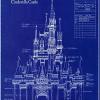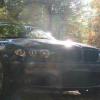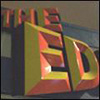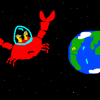RCT Discussion / Mad Dawg's Disney Tips
-
 22-July 04
22-July 04
-

 Highball
Offline
I'm stealing a topic from Corky and putting my own little twist on it. With another influx of Disney parks in the Ad District, I thought I would give some tips of my own to the new Disney parkmakers. By no means do I consider myself a "Disney Guru" ( You know who you are
Highball
Offline
I'm stealing a topic from Corky and putting my own little twist on it. With another influx of Disney parks in the Ad District, I thought I would give some tips of my own to the new Disney parkmakers. By no means do I consider myself a "Disney Guru" ( You know who you are ), but a few things in some of the parks being advertised bother me.
), but a few things in some of the parks being advertised bother me.
Tip 1- Planning
When doing a Disney park, it is ALWAYS good to plan the park out before beginning actual "construction". For Disneyland, I have filled over half of a 500 page notebook with sketches, park layouts, ideas, maps, etc. in an effort to organize and plan the park just the way I want it. This also helps me to build faster because, once I finish one thing, I know what I need to build next. By no means do you need to be an artist to do this: most of my sketches are mere blocks and lines because I have absolutely NO artistic skills.
One thing common in all Disney parks is that they are relatively simple in layout. When Walt Disney envisioned Disneyland, he decided that the park should have a central hub, an area of the park where all lands can be seen. This helps the guests in their decision of where to go next and it helps to orientate the guests of where they are.
Another thing Walt used was something he called the "weenie" of the park and its' lands. A weenie is something that can be seen from each land to help orientate the guests of where they are. The biggest weenie is obviously the castle, but smaller weenies include Big Thunder Mountain, Space Mountain, Swiss Family Treehouse (DLP at least), Main Street Station, the Matterhorn, Mt. Prometheus, Earfell Tower, etc. You get the picture.
Tip 2- Keeping with the Theme
In a Disney park, everything is part of the story. From the structures housing the rides to the shrub and flower selection, everything must fit with the story being told. This is by far, IMO at least, the most difficult thing to achieve in a Disney park.
Many of ya'll know I love Disneyland Paris, so I will use DLP's Fantasyland as my first example: At DLP's Fantasyland, each of the three dark rides represents a European country. Pinocchio represents Italy, Peter Pan, England, and Snow White, Germany. Now, on the Peter Pan side of Fantasyland (the northwest corner), the stuctures and fauna are all distinctly English. Trees consist of oaks, pines, and other evergreen plants commonly found throughout the UK. The Peter Pan facade gives way to Toad Hall, a restaurant playing English folk tunes and serving fish and chips. This area is surrounded by weeping willows and has a very upbeat feel to it, right down to the structure itself. The bright red bricks help to enhance the atmosphere as does the structure's shape. The plants and structures help to keep the theme flowing smoothly without an abrupt transition from ride to ride.
I hope that made sense.....
Another thing commonly used in Disney parks are Disney characters. I have noticed that most people pick a character, pick a land they would associate with that character, and plop a ride in that land. If you are going to create original rides using Disney characters, make sure they keep with the areas theme. For example, Finding Nemo characters do not belong in Fantasyland. Fantasyland is the place where fairy tales come to life, not the latest Disney/Pixar film. Now I know some people may ask how 20,000 Leagues and Mickey's Philharmagic can fit in Fantasyland, and, in my honest opinion, they don't. MP is a cartoon and would have fit better in Mickey's Toontown fair, but this is the Eisner era and thus they put them where they have room.... sad but true.
Another character nitpick is the number of character themed rides some people try to cram into their parks. IMO, doing so shows a lack of imagination. Has anyone noticed that most of Disney's most popular rides were completely original? Pirates of the Caribbean, the Haunted Mansion, Space Mountain, the Jungle Cruise, and Big Thunder Mountain Railroad all have no Disney character affiliation with them. Try experimenting with new ideas and themes for your rides. Using Disney characters is ok, but don't overdo it, especially in a single area.
Tip 3- Attraction Selection
Another way to keep with the theme is your ride selection. Basic carnival rides surrounded by shrubbery won't cut it in a Disney park. Disney tends to use mostly tracked rides with a complimentary spinning flat ride (Dumbo, Astro Orbitor, Aladdin, Mad Tea Party, Carousels). Now I'm not saying choose only spinning flat rides, but that seems to be the Disney way for some reason. If you select a flat, theme it to the bone.
Another attraction problem I see is this: People take rides from other Disney parks and implement them into their park. For example, the Tower of Terror is not a Disneyland/Magic Kingdom attraction. In all it's incarnations (FLA, CA, Tokyo), it is not in a Disneyland style park. Other rides that don't belong in DL parks are: Mission: Space, Rock n' Roller Coaster, Journey to the Center of the Earth, Expedition: Everest, Kali River Rapids, Soarin', Aquatopia, and Test Track. All these rides are distinct to the parks that they are in, and just don't belong in any other park. Remember, this is my opinion. If you want them in your park, go for it. Just TRY to fit them in with the theme. Simply dropping them in the park just isn't Disneyish.
Tip 4- Land Transition
This could have gone with keeping with the theme, but this seems to be a big issue of late, especially with Corkscrewed's DisneySea Spain.
When going from land to land, a smooth transition is always the best way to go. For example, at the Magic Kingdom, Adventureland borders Frontierland. Each land has a uniquely different theme, so the question is, how to join them without an abrupt change in the theme? The answer is simple: make the transition smooth. At the MK, as you near Frontierland from Adventureland, the themeing becomes much more adobe/mud like, something you would expect to see in an African village. On the Frontierland side, the themeing is very Mexican, with mud walls and wood poles as the common themeing. The two styles are distinct to their countries, but still look very similar. So, the Imagineers used the two styles to thin the line between the two lands. The plant selection is also critical in this area. Palms and thick rainforest trees SLOWLY thin out and give way to more barren land and canary palms and such. On the Frontierland side, the barren landscape becomes thicker with brush which then explodes into a rainforest once in Adventureland.
Phew.... still with me?
Good, because I'm done for now. I'll add more if I see something that bothers me. I hope these tips help, and remember, they are my opinion. If you want to do something different, go ahead. It's your park.
MD -

 Ride6
Offline
Good tips. Combined with Corks guid I think that even I could build a Disney park. If I had the desire to
Ride6
Offline
Good tips. Combined with Corks guid I think that even I could build a Disney park. If I had the desire to .
.
ride6 -

 rctfreak2000
Offline
Hi. All of that was sorta the obvious crap people should know in the first place if they have been to a disney park.
rctfreak2000
Offline
Hi. All of that was sorta the obvious crap people should know in the first place if they have been to a disney park.
If it isn't obvious to some people, live with it. Let people build the way they want to. If they choose to add Disney to the title, ignore the name and judge the park for what it is, not bitch that it doesn't fit the Disney style.
Interpretation, something that makes the damn game interesting... -

 Coaster Ed
Offline
It looks like Mad Dawg thought a few things were being overlooked by the Disney park makers and wanted to get them out. He's made some good observations that aren't obvious to everyone. The theme transitions and the lack of character themed rides are both good points which a lot of people overlook. It's true that personal inspiration has as much place in a Disney park as any other park, but Mad Dawg went out of his way to say that none of this is mandatory, so I don't think it's fair to get on him about interpretation. He's just trying to be helpful and went to the trouble of writing out his advice in an organized way which is something I think he should be aplauded for. Thanks Mad Dawg.
Coaster Ed
Offline
It looks like Mad Dawg thought a few things were being overlooked by the Disney park makers and wanted to get them out. He's made some good observations that aren't obvious to everyone. The theme transitions and the lack of character themed rides are both good points which a lot of people overlook. It's true that personal inspiration has as much place in a Disney park as any other park, but Mad Dawg went out of his way to say that none of this is mandatory, so I don't think it's fair to get on him about interpretation. He's just trying to be helpful and went to the trouble of writing out his advice in an organized way which is something I think he should be aplauded for. Thanks Mad Dawg.
Oh, and any chance we could see some of your best sketches? I'd love to see them even if nobody else does. For comparison purposes. I make a lot of sketches too (though it sounds like you make more)> You can see some of mine in my webshots gallery if you're interested (linked in sig). -
 Disney Freak
Offline
You said what was needed to say. Well done!
Disney Freak
Offline
You said what was needed to say. Well done!
I agree that even in Corky's (amazing) spotlight "DisneySea Spain" alot of the transitions seemed not so sorted out and very 'rough', if you will. I'd like to add some more of my own if you don't mind.
Tip 5 - Eye candy.
Something not so obvious in Disney theme parks (all with the exception of Walt Disney Studios and California Adventure) is that Disney never leaves blank spaces. There is always something to see or, 'explore' if you will. If you take a look at the lavish Tokyo DisneySea you'll find that in every land props themed to the area are not uncommon. Disney never leaves out blank spaces as it is "bad show" as Walt put it. Between rides make sure you've placed interesting things to see and discover. I know this is hard to acomplish but this is the reason so many fail. (I'm not excluding myself here). For example, DisneySea uses props of marine things throughout the park such as boats, a lighthouse etc making an overall marine theme for the park using small eye candy. (read below)
Tip 6 - Crowd "eaters".
Attractions at Disney are not all glamour. If you take a look at the Magic Kingdom you'll find alot of so called "useless" attractions. Attractions that "no one" rides such as the People Mover (TTA), The Tiki Room, Alice's Maze etc.... These are called A/B Tickets. Why are they there? Well you see, while every land has a "wienie" it also must include attractions that will "eat up" the remaing crowds that are not riding the major rides, thus less crowded walkways. This isn't a 'big' issue yet still important in Disney parks. Parks such as Disneyland would look chaotic if it weren't for A Ticket attractions. Bottom line, not everything great is filled with E-Ticket rides. On a crowded Christmas day you'll be thankful no one is riding the People Mover.
Tip 7 - Keeping with the overall theme.
While Mad Dawg mentioned land theming, here I'm talking about the "overall" experience. Why does the Magic Kingdom have a castle at the end of Main Street or at the side of Adventureland? Well, because every magical Kingdom must have a magical castle. Epcot I find is the only exception because there the themes are so different yet somehow flow. If you manage to get a theme like that going, good job! Other examples are Disney's Animal Kingdom. What does the Tree have to do with the park? Well, it is the "Tree of Life" and DAK celebrates life, whether past or present. Why is (atleast was) the Chinese Theatre the centerpiece for MGM Studios? Because it is THE symbol for Hollywood of the past, present and future. (again, under Eisner's management theme has no purpose thus the hat and [IMO] Fantasmic! / RnR). Apart from those select attractions everything else contributes the idea of movies and movie making. Everything is part of an overall theme. Get my drift?
Can't think of any more ideas as of now but I hope I helped contribute to Dawg's wonderful Disney guide. Let this be a a lesson we should all learn from. Mad Dawg has managed to build a magnificent Magic Kingdom park with the help of a few simple rules.
Disney Freak. -

 Highball
Offline
Highball
Offline
Thanks for the kind words, Ed. I took a look at some of your sketches and mine are no where near that good. I will try to upload some of my sketches later tonight, but I warn you they aren't pretty.It looks like Mad Dawg thought a few things were being overlooked by the Disney park makers and wanted to get them out. He's made some good observations that aren't obvious to everyone. The theme transitions and the lack of character themed rides are both good points which a lot of people overlook. It's true that personal inspiration has as much place in a Disney park as any other park, but Mad Dawg went out of his way to say that none of this is mandatory, so I don't think it's fair to get on him about interpretation. He's just trying to be helpful and went to the trouble of writing out his advice in an organized way which is something I think he should be aplauded for. Thanks Mad Dawg.
Oh, and any chance we could see some of your best sketches? I'd love to see them even if nobody else does. For comparison purposes. I make a lot of sketches too (though it sounds like you make more)> You can see some of mine in my webshots gallery if you're interested (linked in sig).
Thanks for the additional tips, Disney Freak. Those are also very good points. Too bad I didn't think of them first...
-

Corkscrewed Offline
Very nice, Mad Dawg. You have this down, and those are great tips. Disney Freak, I'd like to compliment you on your insight into the "crowd eaters." That's a subtle thing few people realize.
And for the record, it's "weenie."
-

 Coaster Ed
Offline
Where do you guys get this "weenie" thing? Is there a book you read that in? (since you all seem to know the same word)
Coaster Ed
Offline
Where do you guys get this "weenie" thing? Is there a book you read that in? (since you all seem to know the same word)
Oh and I like hoe this has become a collective thing. Anyone with good advice can just add onto it. That's NE at it's best right there.
-

 natelox
Offline
natelox
Offline
Tip 3- Attraction Selection
Another attraction problem I see is this: People take rides from other Disney parks and implement them into their park. For example, the Tower of Terror is not a Disneyland/Magic Kingdom attraction. In all it's incarnations (FLA, CA, Tokyo), it is not in a Disneyland style park. Other rides that don't belong in DL parks are: Mission: Space, Rock n' Roller Coaster, Journey to the Center of the Earth, Expedition: Everest, Kali River Rapids, Soarin', Aquatopia, and Test Track. All these rides are distinct to the parks that they are in, and just don't belong in any other park.
I disagree. Doing a strict "Magic Kingdom" style park doesn't allow for too much imagination (which Disney is all about). I think taking some of Disney's best rides and putting them into a park with the normal themes can make it more intresting and more appealing. It also happens in real life, to an extent. Look at Disneyland, home to "Honey, I Shrunk The Audience", "Fantasmic", "Indiana Jones Adventure" and "Star Tours", all of which are found outside the "Magic Kingdom" style park at the other Disney Resorts. Even "Test Track", at Epcot is very similar to the now dead attraction "Rocket Rods". Disney's California Adventure is home to "It's Tough To Be A Bug", "Tower Of Terror", "Disney Animation", "Who Want's To Be A Millionaire" and "Soarin' Over California" which can all be found outside of that specific park at different resorts.
What your list, Mad Dawg, is for, is for recreating Disneyland or Magic Kingdom, not for building a Disney park. -
 Disney Freak
Offline
Disney Freak
Offline
Walt titled big attractions that draw people in to a certain area a "weenie"Where do you guys get this "weenie" thing?

-

 Highball
Offline
Highball
Offline
Well, I read about it in "Designing Disney", a book by legendary Imagineer John Hench. It's a great read and gave me some great tips on how to create my park. It's kind of my architectural bible. That and about 6 other Disney books I own.Where do you guys get this "weenie" thing? Is there a book you read that in? (since you all seem to know the same word)
Oh and I like hoe this has become a collective thing. Anyone with good advice can just add onto it. That's NE at it's best right there.

You're right about one thing, nate, I was thinking of TMK and DL when I typed that tip. In fact, most of my tips are referring to these style parks. However, most Disney parks in the Ad District are following a basic Magic Kingdom layout, even Phantasia to an extent. And this isn't a "list" of guidelines for Disney parkmakers to follow; these are simply some personal tips that I believe can make a Disney park go from average to great.I disagree. Doing a strict "Magic Kingdom" style park doesn't allow for too much imagination (which Disney is all about). I think taking some of Disney's best rides and putting them into a park with the normal themes can make it more intresting and more appealing. It also happens in real life, to an extent. Look at Disneyland, home to "Honey, I Shrunk The Audience", "Fantasmic", "Indiana Jones Adventure" and "Star Tours", all of which are found outside the "Magic Kingdom" style park at the other Disney Resorts. Even "Test Track", at Epcot is very similar to the now dead attraction "Rocket Rods". Disney's California Adventure is home to "It's Tough To Be A Bug", "Tower Of Terror", "Disney Animation", "Who Want's To Be A Millionaire" and "Soarin' Over California" which can all be found outside of that specific park at different resorts.
What your list, Mad Dawg, is for, is for recreating Disneyland or Magic Kingdom, not for building a Disney park. -

 Highball
Offline
Tip 8- Color
Highball
Offline
Tip 8- Color
Color is one of the most important themeing elements in a Disney park. Colors can make or break an area. This is because color sets the mood for an area. In an entrance area, say Main Street, U.S.A. for example, the use of light and warm colors provides an inviting, unthreatening atmosphere that helps the guests to relax and do things they usually wouldn't do in the real world, such as freely mingling with other guests. Examples of warm colors include yellow (which looks awesome when accented with dark purple), red (the color of heart and the warmest color of all), white (although bland and overpowering in large amounts, when used in moderation, can create an effect just as inviting as the others), and pinks (peach primarily is a good, warm color). Remember one thing though: never have the entire area done in just these colors. Break them up with complimentary darker colors such as purples (see yellow), blues, dark greens, and even blacks.
If the area is to be dark and foreboding, the use of cool, dark or even murky colors is a must. Blacks, greys, darker variations of blue, purple, red, and green can help to convey the feeling that things are not okay. Watch out for an overuse of greys as they can make an area seem threatening, but it can also become quite monotonous and make a guest less optimistic about what's ahead. Also, what I said about the warmer colors applies here as well: Do not do an entire area in just these colors. Break them up with accents of light colors or even the earth tones (below) depending on the theme. Another thing is dark colors don't only apply to cold, spooky areas. In Discoveryland, greys and dark greens play a key role in setting the theme for that area.
The earth tones, those including rich wood browns, greens associated with forests or jungles, and mild blues similar to the look of water can be used in areas such as Lost River Delta, Frontierland, Adventureland, or any other natural area of a park. These colors can help to compliment the surrounding wildlife and landscape to create a truly immersive experience. Sometimes, yellow is a good breaker for the earth tones. I think yellow and sky blue look incredible together and they create a truly aquatic feeling. White is also good for an accent on the earth tones.
My next tip installment shall be how to make your structures flow with the story.
MD
 Tags
Tags
- No Tags
